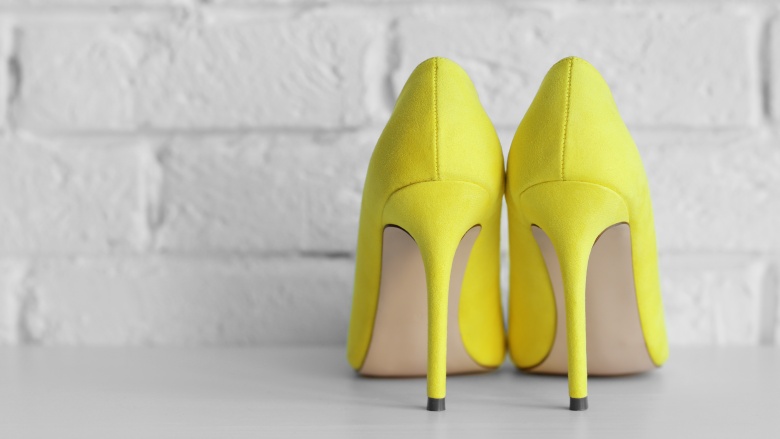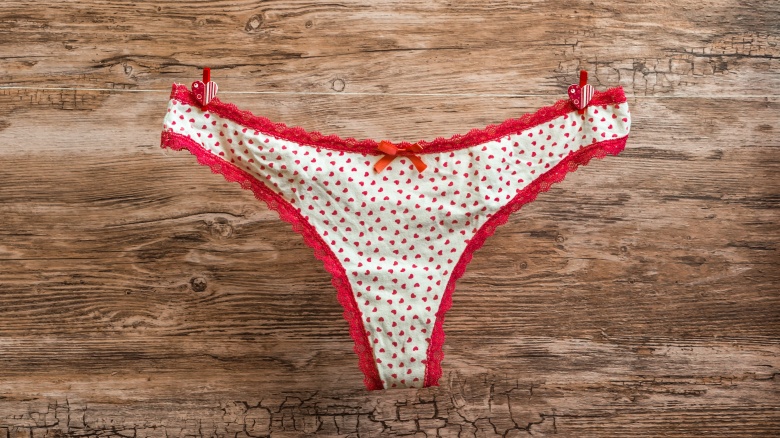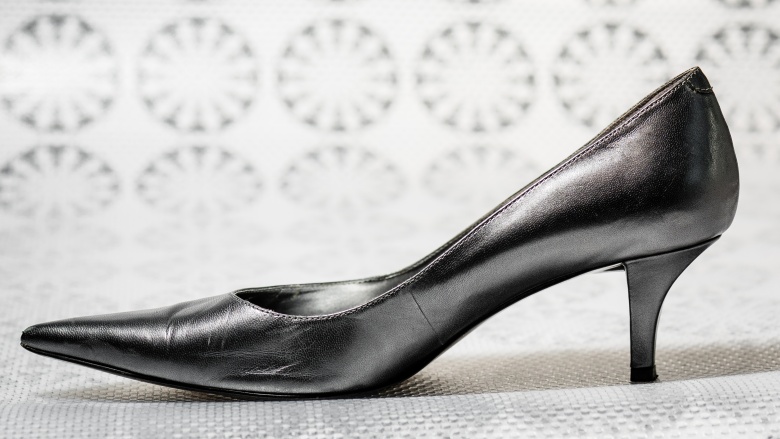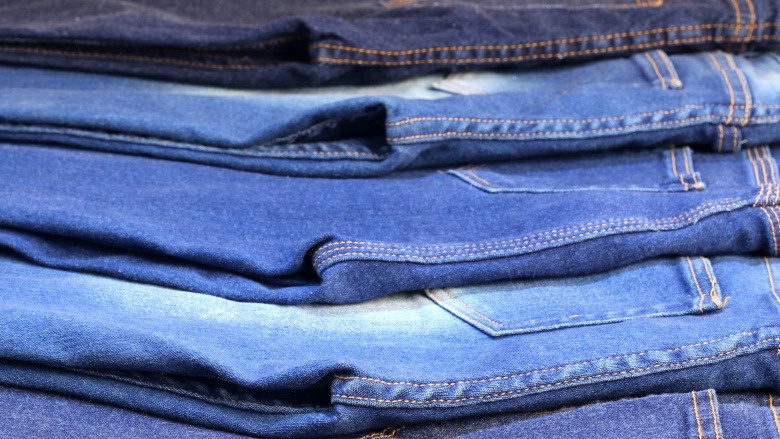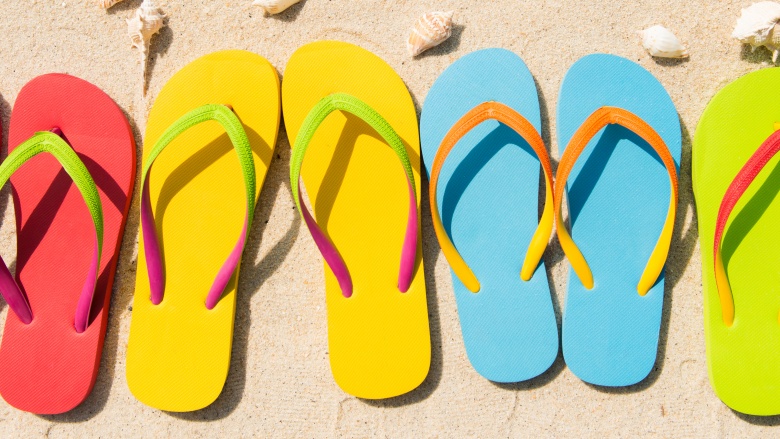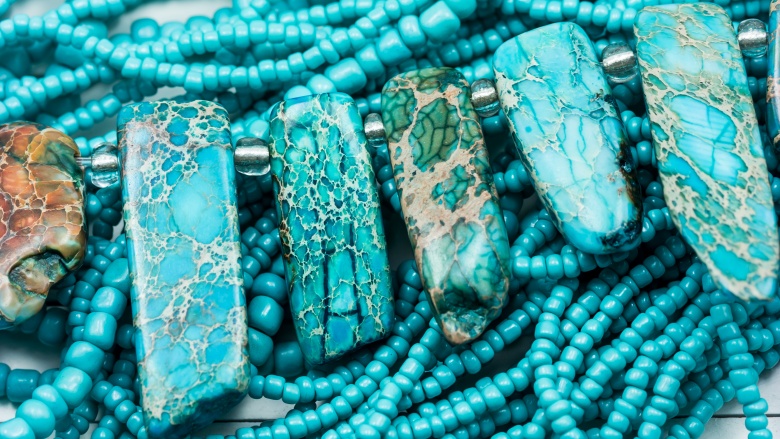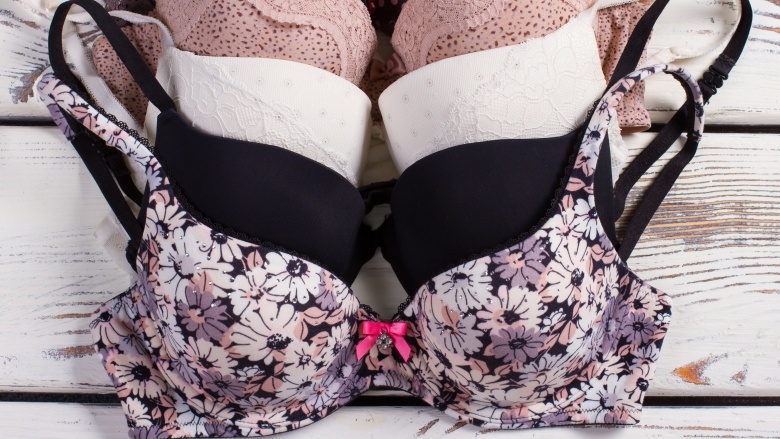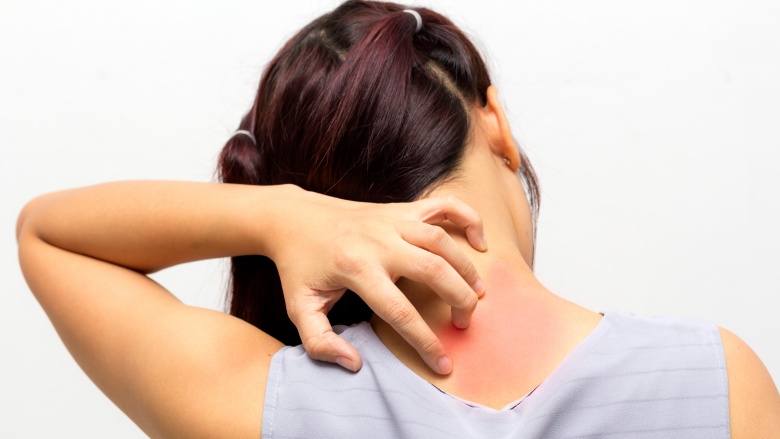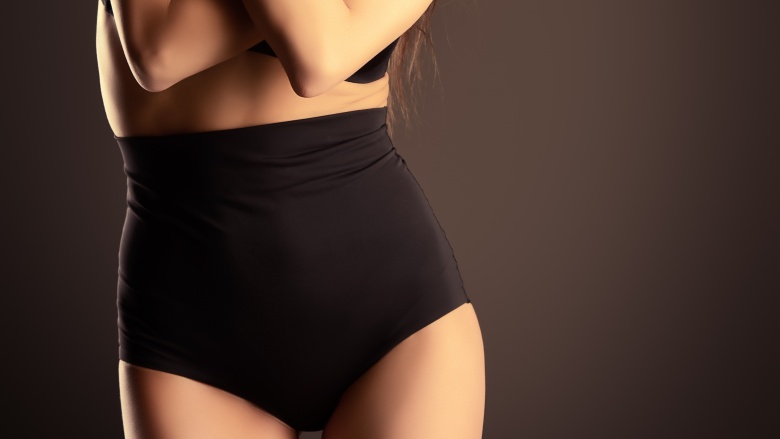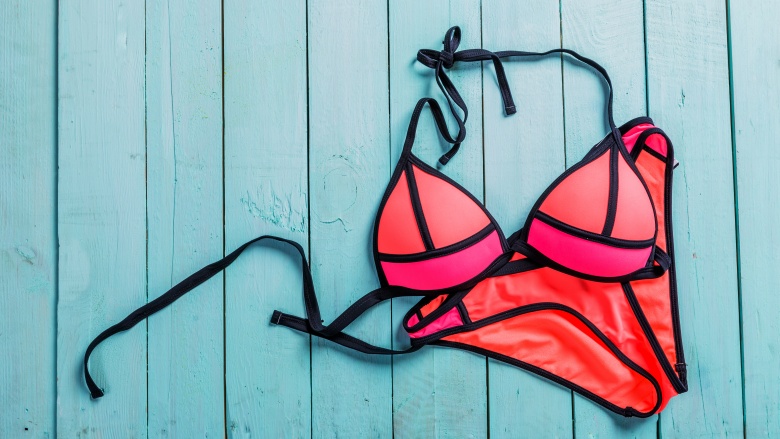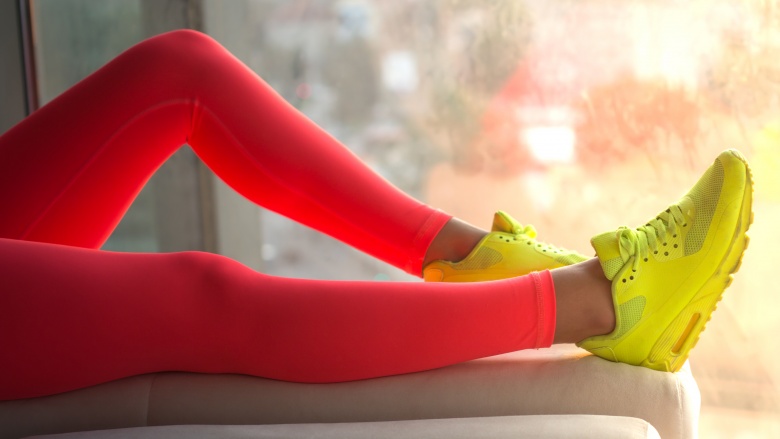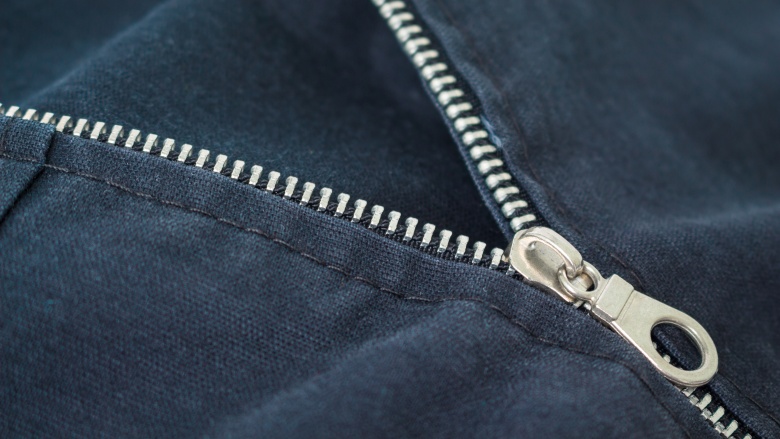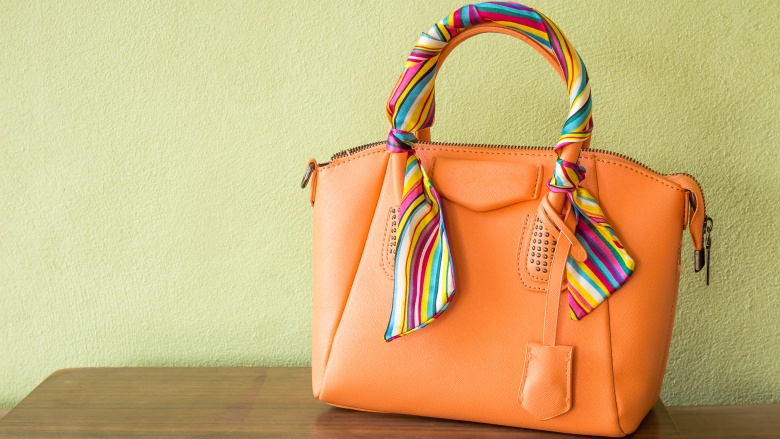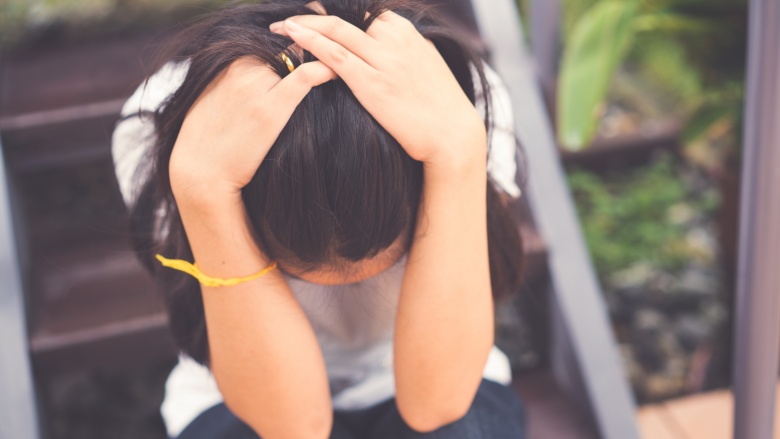14 Clothing Items That Are Bad For Your Health
Whether you tend to follow the trends or prefer to set them yourself, not all clothing is created equal when it comes to its impact on your health. While different items may make you feel stylish, sophisticated, and sexy, it's important to pay attention to the various health risks that are associated with certain types of clothing, no matter how much of a fashion risk-taker you may be. In order to look and feel your best, it's best to size up the potential health hazards before trying some of the following items on for size.
High heels
Many women enjoy rocking high heels, whether it's to the office or for a night out on the town. In fact, sporting heels that are two, three, or four inches tall (or even higher) is a common practice for countless women today, and many women want to wear them as much as possible. Not only do heel-wearers enjoy the benefits of being taller and even appearing slimmer, but heels have also been known to spice up any humdrum outfit and give an entire look that extra kick that many women crave. However, keep in mind that the next time you put on heels, your body ends up suffering as a result. Heels put unnecessary pressure on your spine, back, and knees, and constantly wearing heels can take a major toll on the muscles in your calves. Further, the higher your heel, the more unnecessary force and weight is being placed on the balls of your feet, as they're literally left carrying the brunt of your body mass. There are also the added risks of tripping, falling, and rolling your ankles when you're wearing heels, and sometimes these little missteps and tumbles can have dire consequences. With this in mind, it's important to do yourself a favor by staying grounded and opting for flats whenever possible.
Thong underwear
Thong underwear is a popular choice for women today, not only in terms of a thong's sultry nature, but also due to the fact that it eliminates the dreaded underwear lines that can result from wearing full-coverage undies, particularly with form-fitting outfits. And while the thought of putting on granny panties may be a less-than-appealing option, it's important to understand that there are actually health risks associated with wearing barely-there underwear. For instance, if you're someone who's prone to UTIs or other infections, wearing a thong can make the recovery process more difficult. Additionally, depending upon your activity level, the back part of your thong can have a tendency to slide forward and transfer bacteria to your vagina. If that's not alarming enough, wearing thongs has also been associated with the development of hemorrhoids. So if you're looking for underwear that works for you and not against you, full-coverage underwear has got you covered in every respect.
Pointy-toe shoes
It's time to get right to the point and recognize that pointy-toe shoes are bad for your health. Considering how a pointy-toe shoe clearly molds, folds, and squeezes your feet into an unnatural shape, it's not surprising that they can be especially detrimental to your individual toes. In fact, this type of shoe can cause swelling of the toes as well as a neuroma, which is a pinching of the nerve between the toes, typically between digits number three and four. In order to avoid this kind of painful toe trauma and keep your toes in tip-top shape, it's best to avoid pointy-toe shoes altogether and select a shoe with a larger and more forgiving toe box. Get the point?
Skinny jeans
Skinny jeans have become increasingly popular over the last few years. And unlike their baggy and boxy counterparts, skinny jeans hug every curve of your body and are tight around your hips, buttocks, crotch, legs, calves, and ankles. And while skinny jeans may be your go-to, you should be aware of the fact that when you put them on, you're actually putting yourself in harm's way. To begin with, the sheer tightness of skinny jeans can cause numbness and tingling in your legs, and their tautness around your waist has even been linked to acid reflux. To make matters worse, there have been known cases of skinny jeans exacerbating a condition called compartment syndrome, which is caused by the buildup of pressure from the swelling of body tissues. Now that you have the skinny on skinny jeans, maybe you'll rather put on a looser pair that are more comfortable and healthier.
Flip-flops
Not simply reserved for pristine beaches or gym showers, flip-flops are a top shoe choice for countless women. While the fact that flip-flops can be put on and off with ease may be appealing, the health risks associated with flip-flops are incredibly off-putting. Firstly, your feet are entirely exposed, and that leaves them completely vulnerable to dropped and falling objects, getting stepped on or rolled over, as well as the possibility of smashing or hitting your feet on whatever's around you. Further, this exposure can also make your feet more susceptible to developing various types of skin cancer. Next, the sheer design of the flip-flop tends to provide minimal foot support due to the thinness of the soles, and you may find yourself walking differently in flip-flops, which can create problems for your entire body. In addition, when it comes to the very shape of a flip-flop, it's also possible to develop pain between your big and second toe. But if you're still not willing to flip your stance when it comes to flip-flops, make sure you look for a brand with a thicker sole, make sure to apply protective sunscreen to your feet, and watch where you're walking!
Heavy jewelry
When it comes to statement pieces and eye-catching jewelry, today's fashion philosophy seems to be the bigger the better. And while earrings, necklaces, bracelets, and rings are becoming more and more enormous, when you bedazzle yourself with these kinds of weighty accessories, a number of consequences may be heading your way. First, many of today's earrings are so heavy and large that women can end up inadvertently stretching or tearing their earlobes as a result. In fact, these giant earrings have a tendency to get hooked onto objects or even ripped out by unknowing children. To that end, heavy necklaces and chains can place a great deal of strain and pressure on your neck, back, and chest, and oversized bracelets and rings have been known to cause wrist, arm, hand, and finger pain. Unless you're interested in going from the jewelry store to the doctor's office, it's in your best interest to accessorize with a smaller size.
Ill-fitting bras
It's not uncommon for women to own many different bras in a wide range of sizes. For example, you may be a 34C in one brand or style, but then fit into a 32D in another. And when it comes to these kinds of bra size discrepancies, there are various health problems that can arise from wearing the wrong bra, especially for women who are well-endowed. In fact, many of these women may experience back and shoulder pain simply due to the sheer size of their breasts. And when you wear an ill-fitting bra, you're doing nothing to help support the weight of your breasts and take the pressure off of your back, shoulders, and spine. In fact, one of the tell-tale signs of an ill-fitting bra is the array of indentation marks that may be left on your back, shoulders, and chest caused by the straps, cups, and underwire digging into you. With this in mind, it's important to get professionally fitted for a bra and look into purchasing bras specifically designed for your breast and body type.
Clothes that contain irritants
Have you ever gotten a rash after sporting a particular piece of clothing? The clothes you wear are made up of different kinds of fibers, fabrics, and materials, but there are also products used in the manufacturing process of many articles of clothing that can be potentially harmful to your health. For example, some clothing contains formaldehyde, flame retardants, dyes, or latex, all of which can cause allergic reactions. So in order to avoid potential skin irritations, rashes, or worse, it's important to find clothing that supports your healthy lifestyle. Whenever possible, wear loose-fitting, all-natural fibers such as cotton, linen, silk, and cashmere. And as a general rule of thumb, try to stick with light colors as they typically contain less dye. In fact, if the tag on an article of clothing instructs you to wash the item separately from others in order to avoid the spreading of color, it's best to separate yourself from that piece of clothing and avoid it altogether.
Shapewear
Many women use shapewear under their clothes on a daily basis to achieve that sleek and smooth look. And while you may enjoy having the kind of silhouette that shapewear can provide, such as a tighter tummy or slimmed-down thighs, it can come at a high price in terms of your health. Since shapewear is meant to be extremely tight and form-fitting, it can put unnecessary and unwanted pressure on your internal organs and thereby cause a whole slew of health problems if worn for too long. To that end, it can also exacerbate acid reflux and heartburn by causing fluids to be pushed out of your stomach. Further, nerve damage can also be an unhappy side effect when your shapewear is constricting your sides and thighs. So while you may swear by shapewear, it's in your body's best interest to swear it off.
Bathing suits
While bathing suits are associated with pool parties and beach vacations (fun, right?), there are actually big health problems that can arise due to this small article of clothing. On the one hand, the minimal sun coverage that bathing suits provide, particularly bikinis, can make you more vulnerable to certain types of skin cancers. After all, more surface area of your skin can potentially be exposed to sunlight and harmful UV rays. Further, the lack of material and coverage can also set the stage for neck, back, and shoulder pain since many bathing suit tops can be very limited in terms of the support they provide your chest. But when bathing suits become wet, a whole slew of new health concerns can arise. In fact, bacteria likes to grow in dark, wet places, and if you're sitting around in your wet bathing suit all day, it increases your risk of developing a yeast infection or a UTI, especially when you take into account the other types of bacteria that are already present in the water. So in order to avoid a major bathing suit blunder, be sure to change out of your wet top and bottom as soon as you can and load up on sunscreen. It's also worth purchasing a bikini top that provides enough support – the good news is that there are many websites and brands that have bathing suits designed for this very purpose.
Yoga pants
Today's yoga pants are a wardrobe staple for many women as they can be worn both in and out of the gym. After all, yoga pants are easy to throw on, form-flattering, and typically comfortable enough to wear whether you're doing downward dog or taking a trip to the store. However, yoga pants can be detrimental to your health, not only when it comes to their sheer tightness, but also because of what can happen when you sweating in them. Whether you're running on the treadmill or running errands, any wetness on tight clothing against your skin can lead to fungal infections. Further, yoga pants can increase your risk of developing a condition known as folliculitis, which is an inflammation of hair follicles caused by bacteria. Perhaps you've even noticed some tiny red bumps on your legs? This might be a skin irritation caused by tight yoga pants. While it may be hard to give up yoga pants, it's important to opt for looser clothing, especially when working out, so that your skin has a chance to breathe.
Clothing that contains nickel
Nickel is used in numerous accessories and found on many different articles of clothing. If you've ever experienced itchiness or redness after wearing certain earrings, bracelets, or eyeglasses, or if you've ever had a rash when a zipper rubbed against your skin, it's important to consult with your doctor to determine if you have a nickel allergy. In fact, it's one of the most common types of skin allergies, so it's best to take steps to limit your contact with nickel whenever possible. You can still wear jewelry, but your best options are to pick stainless steel, silver, and platinum pieces. If you're up for a splurge, high-quality yellow gold is a classic pick. In terms of your clothing choices, look for items that contain plastic snaps and buttons instead of metal, or you can even paint over the metal so it doesn't come in contact with your skin directly.
Giant handbags
It seems that women have more and more items that they carry around with them each day. Their phone, wallet, keys, makeup, gum, mints, tampons, reading glasses, lotion, sunglasses, hair brush, and contact lenses are just some of the various contents found in a woman's purse, not to mention reports, notes, tablets, and/or laptops. But the more weight you lug around with you on a daily basis, the more harm you're doing to your body. In fact, as handbags keep increasing in size and their contents continue to multiply, you're putting unnecessary pressure and strain on your back, shoulders, and elbows each time you carry it. You may even notice that your shoulders have become uneven due to the heavy handbag you take around with you every day. So in order to combat this giant purse problem, you should opt for smaller bags that don't even allow you to pack them with more items. You should also make sure that the purse isn't heavy on its own. In fact, if you own handbags that are heavy when empty, these should be the first ones removed from your purse repertoire. Further, it's worth investing in a rolling bag or rolling backpack for the heavier and bulkier items like laptops.
Clothes that make you self-conscious
As the seasons change, so do the clothing styles that are splashed across television stations and fashion magazine covers. And while staying on-trend may be of great importance to you, some looks may not be particularly appealing to you for whatever reason. For example, while you may like the look of cropped tops, you may find that you don't feel totally at ease when you're wearing one in public. Research has shown that there's a strong connection between attire and mood, so when it comes to selecting the right types of clothing that are beneficial to your health, it's imperative to consider your emotional health as well. That means wearing the clothes, styles, and trends that make you feel good about yourself, and avoiding the ones that don't. In fact, if you're uncomfortable in your clothes, you may feel anxious, nervous, or self-conscious, and you may find that your concentration level and productivity will start to decline as a result. On the flip side, if you're feeling confident and comfortable in what you're wearing, your mood and outlook are likely to be more positive. So if you truly want to make your health and well-being a priority, it's important to be your authentic self and wear the clothes that make you feel your very best.


